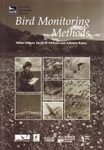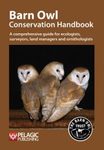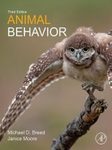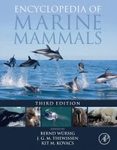Handbook / Manual
By: Colin J Bibby(Author), David A Hill(Author), Neil D Burgess(Author), Simon Mustoe(Author)
302 pages, illustrations, tables
![Bird Census Techniques Bird Census Techniques]()
Click to have a closer look
About this book
Contents
Customer reviews
Biography
Related titles
About this book
In Bird Census Techniques there are entire chapters devoted to the most widely used bird counting techniques, and attempts to amalgamate other counting methodologies into major groups were made. Examples of the use of methods are provided wherever possible and the relative value of various approaches for answering specific questions is also addressed.
Contents
- Acknowledgements
- About the Authors
- Preface to the Second Edition
- Purpose and Design in Counting Birds
- Census Errors
- Territory Mapping Methods
- Line Transects
- Point Counts and Point Transects
- Relative Measure for Bird Communities in Habitats with High Species Richness
- Catching and Marking
- Counting Individual Species
- Counting Colonial Nesting, Flocking and Migrating Birds
- Distribution Studies
- Description and Measurement of Bird Habitat
- Appendix
- References
- Species Index
- General Index
Customer Reviews
Biography
Colin Bibby is Director of Science and Policy at the International Council for Bird Preservation where he is interested in the role of birds as indicators for global biodiversity conservation. While Head of Conservation Science at the Royal Society for the Protection of birds, he was a co-author of Red Data Birds in Britain. In both capacities, he has been struck by the small number of birds of conservation concern which have been counted adequately. He has counted birds in Britain and Europe, as a professional, as an amateur participant, and as an organizer of surveys for the British Trust for Ornithology. He was motivated to start this book by the belief that bird-watchers would contribute more to conservation if they put more effort into counting birds, but lack of guidance on methods was a handicap.
Neil Burgess completed a B.Sc. in Botany and a Ph.D. in Palaeobotany (evolution of the earliest land plants), after which he started work at the Royal Society for the Protection of Birds. He worked on reserves and in the headquarters in Sandy on the management of habitats for birds. During this time the main work on the first edition of Bird Census Techniques was completed. In 1990 he became more involved with African conservation and biodiversity research through project management in the Africa Section of the International Department of the RSPB, and as Research Director of the Society for Environmental Exploration. Most of his work concentrated on tropical forest and wetland habitats in Africa and Southeast Asia, including ornithological surveys. He moved to the Danish Center for Tropical Biodiversity at the University of Copenhagen in 1994 to coordinate and develop programs aiming to map the distribution of biodiversity in Africa. He also worked as International Project Development Officer for the Danish Ornithological Society in 1995-1998. He has maintained an interest in ornithological survey work in Europe, but has moved increasingly into project management work in the tropics and Eastern Europe mainly through setting up and managing programs to assess biodiversity values and to undertake practical conservation actions.
David Hill is Chief Executive of Ecoscope Applied Ecologists which was established in 1992 to provide research and consulting services in ecology to both the public and private sectors in the UK and overseas. Much of Ecoscope's work involves the use of quality survey methods, many based on those described in this book. These methods are becoming increasingly important as standards for environmental assessment and he is actively involved in developing and setting practice standards for survey and evaluation within the profession. David Hill received his doctorate in bird ecology from the Edward Grey Institute of Field Ornithology at the University of Oxford in 1982 after which he moved to the Game Conservancy and later, as Senior Ecologist, to the RSPB. Much of this work involved studies of marked birds, their behavior and habitat preferences in relation to land use. In addition, he set up experiments and monitoring studies on RSPB reserves which brought him into close contact with sampling different bird species and habitats. In 1989 he became Director of Development at the British Trust for Ornithology with responsibility for setting up and running research contracts on estuaries, farmland, woodland and uplands using the methods outlined in this book. He has published a number of books and numerous papers on bird population ecology, habitat ecology and conservation, ecological assessment and mitigation. What started as a passion at the age of five has provided a rewarding career. He hopes this book, in giving to others tools to count birds, will engage enthusiasm and provide a similar reward to many, whilst at the same time yielding essential information for conservation.
Simon Mustoe is a research consultant with Ecoscope Applied Ecologists. He graduated in ecology from the University of East Anglia in 1995 after which he led a multi-national team of researchers to Madagascar as part of an integrated conservation development project, part funded by the BirdLife/FFI/BP Conservation Program. He has worked both as a bird researcher at the RSPB and as an assistant to the African Important Bird Areas (IBA) project at BirdLife International. Simon specializes in ornithological assessments, being familiar with a wide range of different methods and having worked in a range of situations as diverse as tropical forests and the Northeast Atlantic. His experience of modern methods of large scale surveys using distance sampling, led to his being involved in the important task of bringing these chapters up to date.
Handbook / Manual
By: Colin J Bibby(Author), David A Hill(Author), Neil D Burgess(Author), Simon Mustoe(Author)
302 pages, illustrations, tables
"It provides a concise guide to the most widely used census techniques, with detailed description of methodologies and discussion of the advantages and shortcomings association with each method. The guide is well illustrated with explanatory diagrams and is referenced to the scientific literature on the subject [...] An essential reference for anyone engaged in bird census studies."
– Northeastern Naturalist
"This guide to the various techniques used to count wild birds is relevant to ornithological field researchers, both amateur and professional, and ecologists and conservation biologists undergoing census studies of wild bird populations. The advantages, limitations and applications of each technique are discussed in detail."
– Ethology, January 2002
" [...] an important and substantial update of an extremely valuable book. It is a 'must' for any bird-surveyors, volunteer and professional alike, who do not have the first edition – and probably also for those of you who do have."
– Juliet Vickery in British Birds, July 2001

















![Ageing & Sexing of Migratory East Asian Passerines [English / Chinese]](http://mediacdn.nhbs.com/jackets/jackets_resizer_medium/25/250760.jpg?height=150&width=115)
















